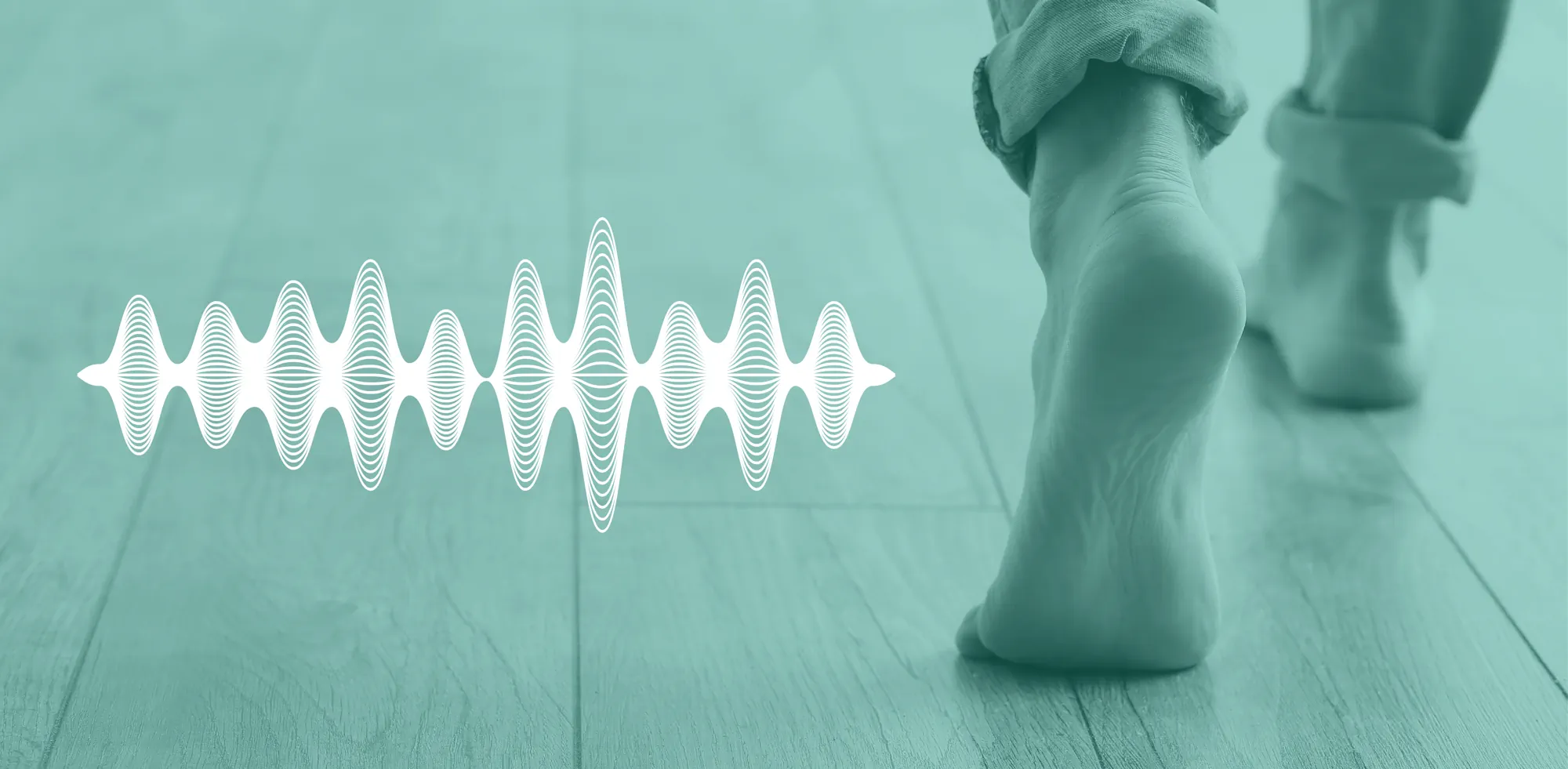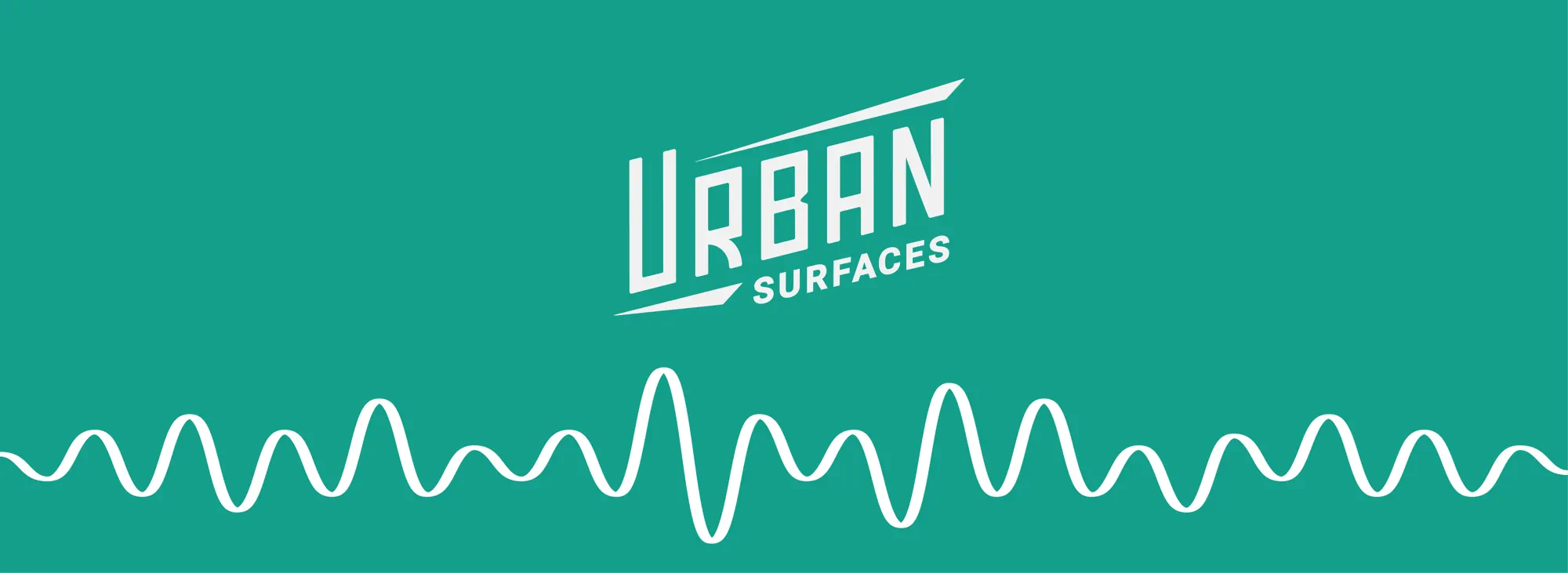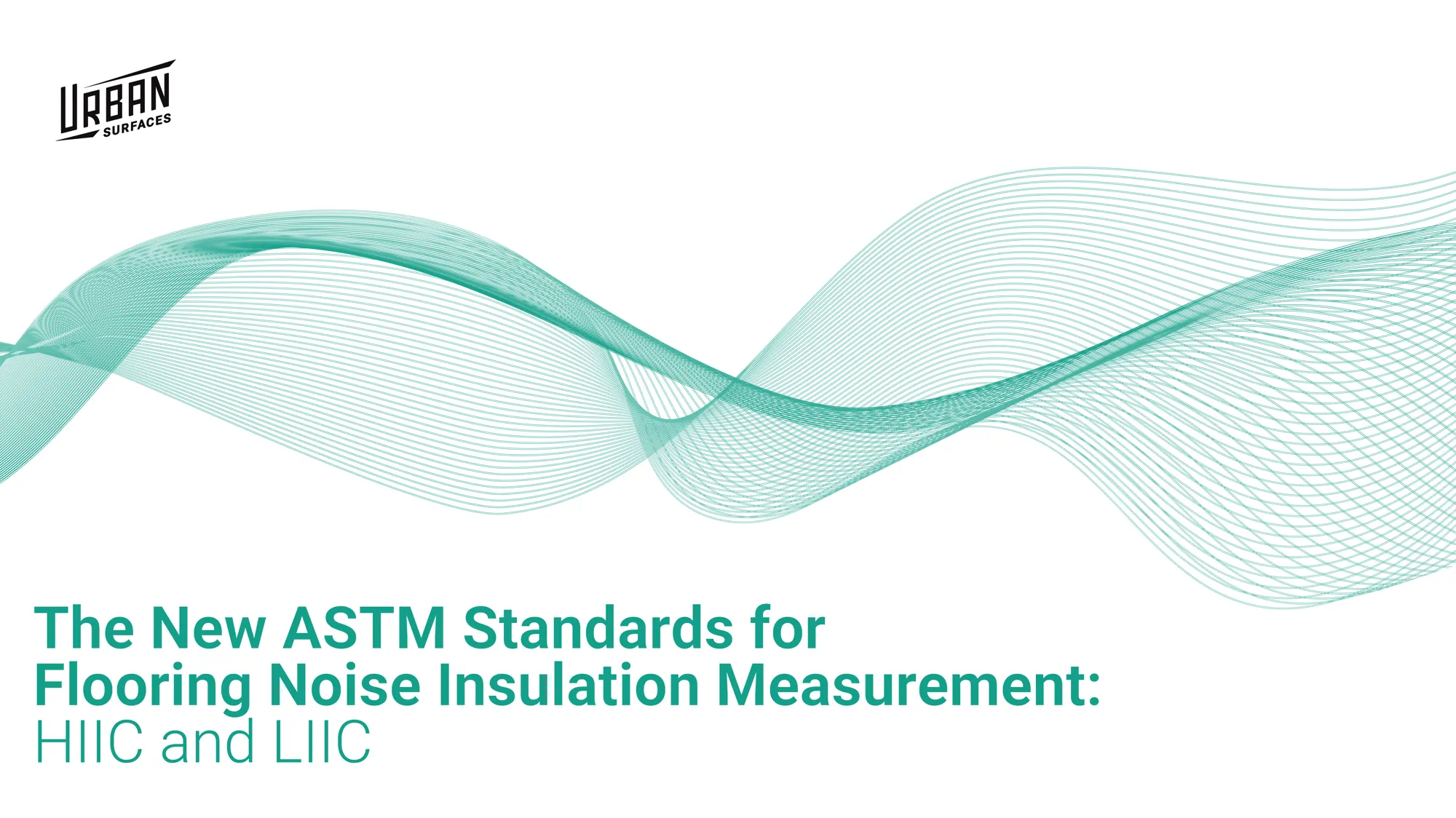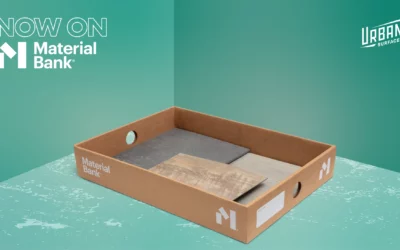After we previously announced our adoption of the new HIIC standard of flooring noise-reduction measurement, we realized the potential need for a more in-depth discussion of the science and reasoning behind HIIC and LIIC. John LoVerde and Wayland Dong of Veneklasen Associates introduced the new standards in a detailed proposal. The proposal is very technical, and some may find it hard to understand, so this post will break it down in an easier-to-digest format.
The Previous Standard: IIC
IIC (ASTM E989) has been in use for decades when measuring sound reduction between floors in a building. It is a measurement based on the sound created by footsteps or other floor impacts in the frequency range of 100-3150Hz. While IIC has been very useful in determining the effectiveness of floor-ceiling sound isolation, it doesn’t “tell the whole story”.
How Sound Frequency Works
Think of the ripples formed when an object drops through the surface of water. Sound also travels in repeated waves, but they are waves of air pressure. Sound frequency is usually measured in hertz or Hz, which is how many times a sound’s pressure wave repeats per second. Sound frequency is quite literally how frequently a sound wave repeats.

The range of sound frequencies that most people can hear is between 20Hz and 20,000Hz. Anything above that range is called ultrasonic, while anything below is known as infrasonic. The higher a sound frequency is, the higher the pitch of the sound (e.g. a bird’s tweet), while a lower frequency results in a deeper sound (e.g. the rumble of an earthquake).
Frequency should not be confused with amplitude (measured in dB/decibels), which is what affects the volume level of a sound. Rather than the frequency of the waves, amplitude is the size of the waves. A sound can be may quieter or louder and still have the same frequency.
The New Standards: HIIC and LIIC
LoVerde and Dong have determined that impact sounds occur on two independent “frequency domains”, and sound reduction measurement can be improved by splitting the measurement into two different frequency ranges, HIIC and LIIC.
HIIC (or High-Frequency Impact Insulation Class) covers sound from 400Hz to 3,150Hz and can cover sounds such as “heel clicks from footfall with hard-soled shoes, dropping objects, dragging furniture, and dog toenails”. LIIC (or Low-Frequency Impact Insulation Class) covers sound from 50Hz to 80Hz which is the range of “thudding” footsteps. Because of the overlap of the HIIC and IIC ranges, HIIC can be determined from IIC measurement data. However, an LIIC rating requires new measurements, since IIC does not cover the 50Hz to 80Hz range.
HIIC and LIIC can best be described as the refinement and expansion of IIC. HIIC now takes the place of IIC, with a rating that best represents the amount of sound reduction performed on the kinds of sound a floor covering or underlayment is most capable of reducing. LIIC isn’t used much for rating floor coverings as it is more useful in rating the effectiveness of an entire floor-ceiling assembly.
When rating flooring or sound reduction, IIC rarely goes above 60. However, two products with matching IIC ratings could have dramatically different HIIC ratings. Therefore, to accurately indicate the sound reduction of a flooring or underlayment, HIIC or ΔHIIC should be specified instead of IIC. (Delta HIIC is the rating of sound reduction minus an assembly.) This allows flooring and underlayment purchasers to best evaluate cost versus benefit.
Adopting the Change to HIIC and LIIC
LoVerde and Dong summarize by saying IIC does “not accurately evaluate assemblies, either in terms of the physical behavior or subjective reaction.” It’s clear that the new standards are important. The industry must move towards the new standards of HIIC and LIIC, leaving the inferior IIC behind.
Going forward, HIIC ratings will be indicators of products designed with true sound reduction in mind. This is why Urban Surfaces will be at the forefront of this movement, removing IIC ratings and placing HIIC ratings on all of our relevant packaging and documentation. We encourage you to start looking for the HIIC rating on products you purchase and using it wherever possible.
For more detailed information on HIIC and LIIC, check out the proposal.

- The Pros and Cons of Office-to-Residential Conversions - July 3, 2024
- See This Senior Center Transformed by InstaGrip - June 28, 2024
- Urban Surfaces Will Be Closed for Memorial Day - May 24, 2024






